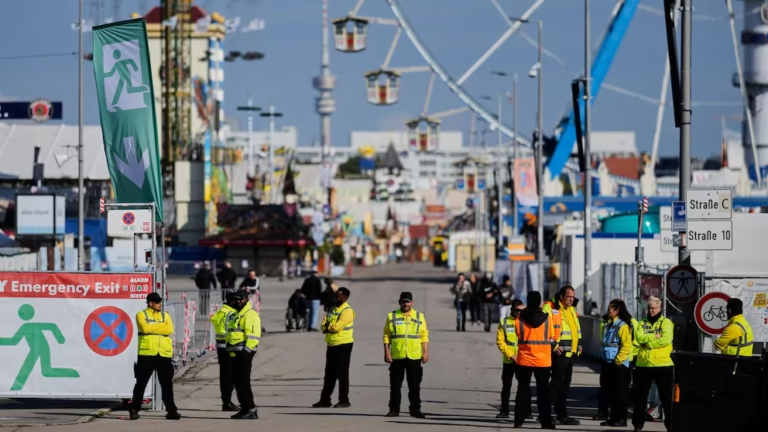In late May 2025, tensions flared dramatically along the Cambodia Thailand border. What began as another dispute over undemarcated terrain escalated into a tragic exchange of gunfire and for the first time in decades, a soldier was killed. Let’s unpack what happened, why it matters, and what it means for both countries moving forward.
Table of Contents
🔍 What Triggered the Violence?
On May 28, 2025, military units from both nations opened fire near the Cambodia–Thailand border in a largely undocumented zone, reportedly close to the Chang Bok area in Cambodia’s Preah Vihear province. This brief skirmish, lasting around ten minutes, led to the death of a Cambodian soldier.
Read more :
Labubu Doll Sells for Millions! Discover the Most Expensive Auction Facts
Each side claims the other fired first. Cambodia says Thai troops opened fire on a trench where Cambodian forces were stationed; Thailand countered that Cambodian patrollers crossed into Thai territory and responded when they fired warning shots.

Why Now? A Story Rooted in History
This clash isn’t an isolated incident. The border between Cambodia and Thailand has been disputed since colonial times, tracing back to a 1907 map drawn by France, which ceded certain areas ambiguously. These fuzzy boundaries have sparked repeated flashpoints notably around the Preah Vihear temple, where artillery exchanges erupted in 2008 and again in 2011.
Though a 1962 ICJ ruling sided with Cambodia over the temple cliffs and a 2013 follow-up reinforced it, border ambiguity remains unresolved. Smaller incidents, like Cambodian visitors singing their anthem at disputed temples in February 2025, have intensified the nationalist undercurrent.
The Aftermath So Far
1. Troop Reinforcements
Following the skirmish, both nations fortified their border positions On June 7, Thailand’s Defence Ministry warned they remain prepared for a “high‑level operation” if necessary.
2. Diplomatic Talks
Despite military posturing, both Cambodia and Thailand reaffirmed their commitment to dialogue. A joint boundary commission meeting is scheduled for June 14.
3. ICJ vs. Bilateral Talks
Cambodia plans to escalate certain disputes to the International Court of Justice, a move Thailand opposes, insisting all issues be resolved via direct negotiation .
Read more :
Recognize and Understand the Early Symptoms of Brain Cancer and Its Prevention
4. Border Closures & Travel Disruptions
Thai authorities shut down crossing hours at multiple checkpoints (including Sa Kaeo) and temporarily closed two crossings to tourists leaving thousands stranded.
5. Rising Nationalist Sentiment
On both sides, the incident has stirred nationalist emotions. Protests surfaced near Thai government sites and Cambodian public calls for calm were issued.
Why It’s More Than Just a Border Dispute
🌏 Regional Stability
This skirmish raised alarms across Southeast Asia. Observers worry that unresolved border tensions could invite external influence or escalate dangerously .
Political Stakes
Both leaders Thailand’s Paetongtarn Shinawatra and Cambodia’s Hun Manet are under pressure. Their governments, historically close and familial, now face scrutiny: can they maintain peace without appearing weak?
Read more :
Soldiers Freed in Ukraine-Russia Swap Return After Years
Economic Fallout
Border disruptions threaten local economies dependent on cross-border trade and tourism. The closure of tourist crossings and checkpoints is already hurting regional businesses
Legal and Diplomatic Precedent
Cambodia’s move to involve the ICJ could set a powerful precedent but Thailand’s refusal complicates it. The outcome may influence how Asia resolves territorial disputes.
What Happens Next?
| Upcoming Developments | What to Watch |
|---|---|
| June 14 Meeting | Crucial juncture to assess whether both sides can find middle ground. |
| ICJ Proceedings | Cambodia likely to file cases over disputed tracts. Thailand may opt out or countersue. |
| Grassroots Reactions | Local communities and border town economies could be further affected. |
| External Mediation | ASEAN, China, or other regional players may offer to mediate. |
Final Thoughts
This latest shooting incident is a potent reminder that centuries-old border disputes can re‑ignite suddenly even between neighbors with otherwise cordial ties. While both countries say they prefer diplomacy, military reinforcements and nationalist rhetoric risk making this a flashpoint.
The scheduled June 14 boundary talks are pivotal. A bilateral agreement could prevent escalation; failure may steer Cambodia toward international litigation potentially destabilizing regional relations.
In the meantime, this event serves as a case study in why formalizing borders, respecting court rulings, and maintaining open dialogue are vital to peace. For Thailand and Cambodia, the challenge will be navigating national pride, neighborly cooperation, and international pressure all without igniting a broader conflict.
📚 Sources
Here are key sources cited for this article:
- Reuters: “Thailand and Cambodia say they will return to agreed border positions after fatal clash” (Jun 8 2025) reuters.com+2reuters.com+2reuters.com+2
- Reuters: “Thailand urges positive engagement…” (Jun 5 2025) reuters.com
- Reuters: “Thai military prepared…” (Jun 6 2025) reuters.com
- Reuters: “Thailand and Cambodia reinforcing troops…” (Jun 7 2025) reuters.com+1en.wikipedia.org+1
- AP News: “Cambodia says it will take border dispute…” (Jun 2 2025) apnews.com+1en.wikipedia.org+1
- Wikipedia and related news on the 2025 Cambodian–Thai border crisis en.wikipedia.org



3 thoughts on “Recent Cambodia Thailand Border Shooting on May 2025”